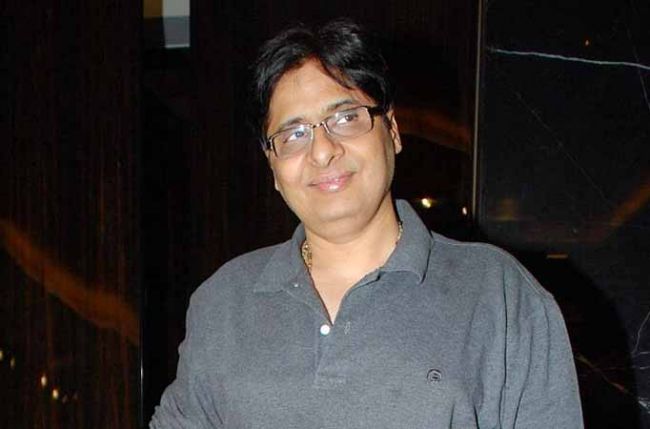Meet Brahmanand Singh. A filmmaker with a difference. In the age when biopics are the flavour, Brahmanand is busy making biographical documentaries. He had to his name a national award for Pancham Unmixed: Mujhe Chalte Jaana Hai: a documentary based on the great musician RD Burman. He is coming up with another documentary and this time it is again based on life one of India’s golden voices- The Late Jagjit Singh. The film is called ‘Kaagaz Ki Kashti’.
documentary based on the great musician RD Burman. He is coming up with another documentary and this time it is again based on life one of India’s golden voices- The Late Jagjit Singh. The film is called ‘Kaagaz Ki Kashti’.
Bollywoodirect caught up with the filmmaker as he opened up about the challenges of a documentary filmmaker, how he gave up on the documentaries after making his first one and then got inspired again to make another.
Q: How did the idea of making a documentary of Jagjit Singh emerge in your mind?
A: This idea was on my mind since a long time. It was there in my mind even when I was not a filmmaker. I was always curious to know the life insights of people like Jagjit Singh – how they work, their struggle, their process of doing their work. People like Jagjit Singh are born once in 100 years. There are so many stories hidden behind such people. There are many singers but not all of them have that power in their voice to touch hearts.
Q: You have earlier made a film on RD Burman as well. Have you been making documentaries? What is it that you love about making documentaries that you stuck in making them only?
A: Yes. I had faced several challenges while making the film on RD Burman and for the same reason I had decided that I won’t be making any such documentary in the future. Making a documentary like the RD Burman one demand a lot from you and then you don’t get the eyeballs.
I am the first person who is making such films. I have the vision to tell such stories. I, eventually, realised that there is lesser space for such films but there is some and I am trying to find the right module to work it out. What happens is that when people make documentaries, they are very apologetic about it. They complain that there is not much return to it. But a documentary film is not a ‘Sultan’. It won’t yield such huge returns to you. My first priority always remains to complete the film and then I look at other important factors like how to promote it so that many people could see it.
As I had earlier said, I had decided that I would not be making any documentary after RD Burman one and then Jagjit ji passed away too, so my enthusiasm had lessened but after a few months I again realise that once you have started something that you should complete it. Stories of such personalities should come out.
Q: While making these films, did you ever think of the financial gains?
A: I don’t think so anyone has been able to do something concrete if he or she looked at financial gains. You can make a product if your aim is to gain profit. That is another world. This is something a Salman Khan and a Shah Rukh Khan target. I am not saying those are not made of hard-work or enthusiasm. But I don’t think so anybody particularly thinks just about profits. There is one beautiful quote by Jim Collins – ‘Profits are like oxygen, you must take care of them but that is not the purpose for which you live’.
Q: I completely agree with you but here my question was that how do you make sure that there is enough money earned that you can go ahead with your next project?
A: That is a model which I am beginning to understand.
Q: What are the other challenges that a documentary maker has to face?
A: There are many things. First of all, in a documentary, there is no script. You have to create one in the process. In feature films, you can take your best shot, take many shots and choose your music, so everything is pre-decided. This is not the case in documentaries. The process in a documentary to get all these things is completely different.
Q: Does Kaaagaz Ki Kashti talk solely about Jagjit Ji’s singing career or it dwells on his other side of the life as well?
A: All the aspects of his life are there in the film. It is all about him and it includes all shades of him as well.
 Q: Is trying to put someone’s life on screen isn’t a challenge? I mean in terms of what to choose which will go on screen and what to be left?
Q: Is trying to put someone’s life on screen isn’t a challenge? I mean in terms of what to choose which will go on screen and what to be left?
A: That is a big challenge. There are so many things that a person does in a lifetime that it becomes a bit difficult to choose what to take and what to leave. But when we decide the narrative, that narrative decided what is to be taken and what not. It is a very natural process. For example, I could show Jagjit Singh’s childhood days for first 26 minutes of the film but if the film is only one hour then that is too much time given to just one portion of his life. So, one decides in that manner.
Q: How much time did it take to shoot the documentary?
A: It took around three years. It took editing 4000 editing hours. Usually, the biggest of films take 500 to 600 hours but this film took 4000 hours.
Q: What are other projects that you are working on and in future, is there any other documentary planned on another artist?
A: I have a couple of feature films lines up. There is one on the Alzheimer disease. The other one is on child labour. My subjects are a bit heavy but these films are very beautiful. Biographical films inspire me so in the future if I find someone really inspiring, I will surely go for another documentary.
Interview By: Shubham Pandey
Pic Courtesy: Brahmanand Singh’s Facebook, Payal Kumar






